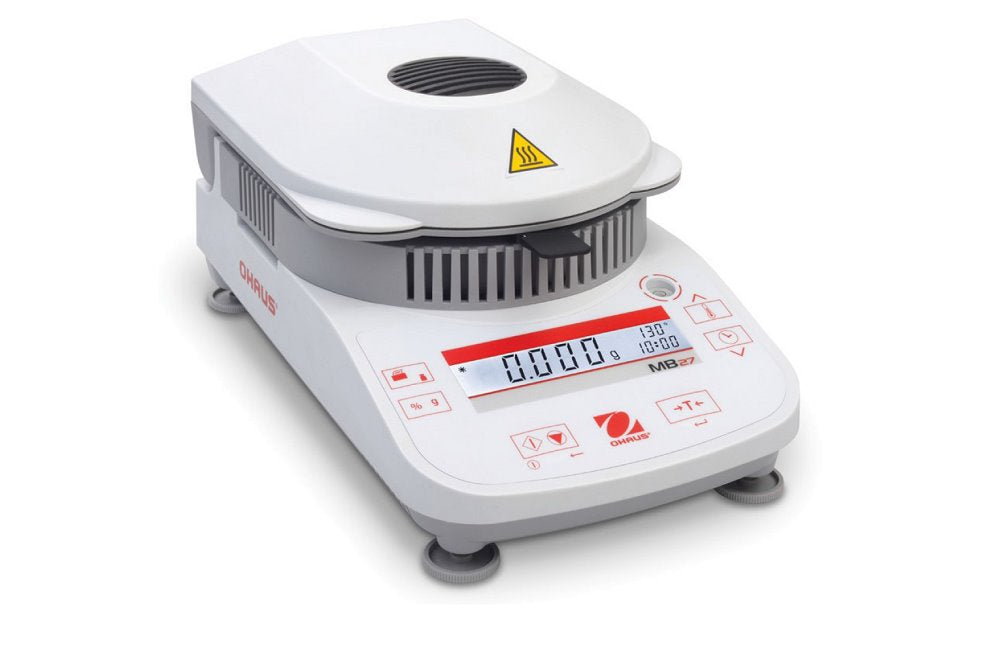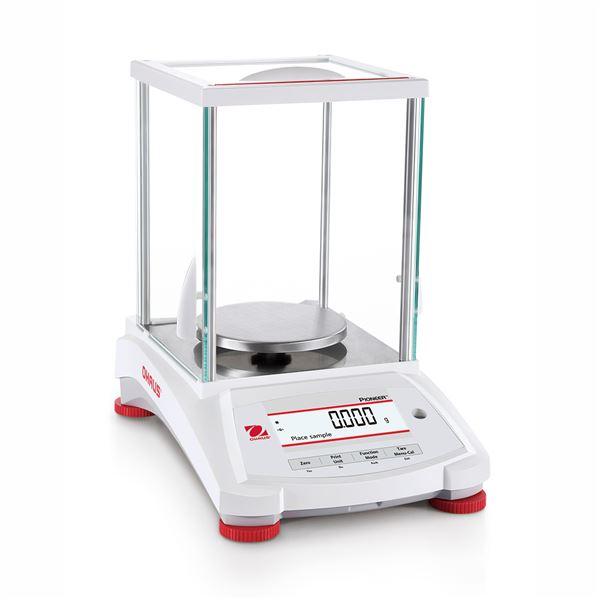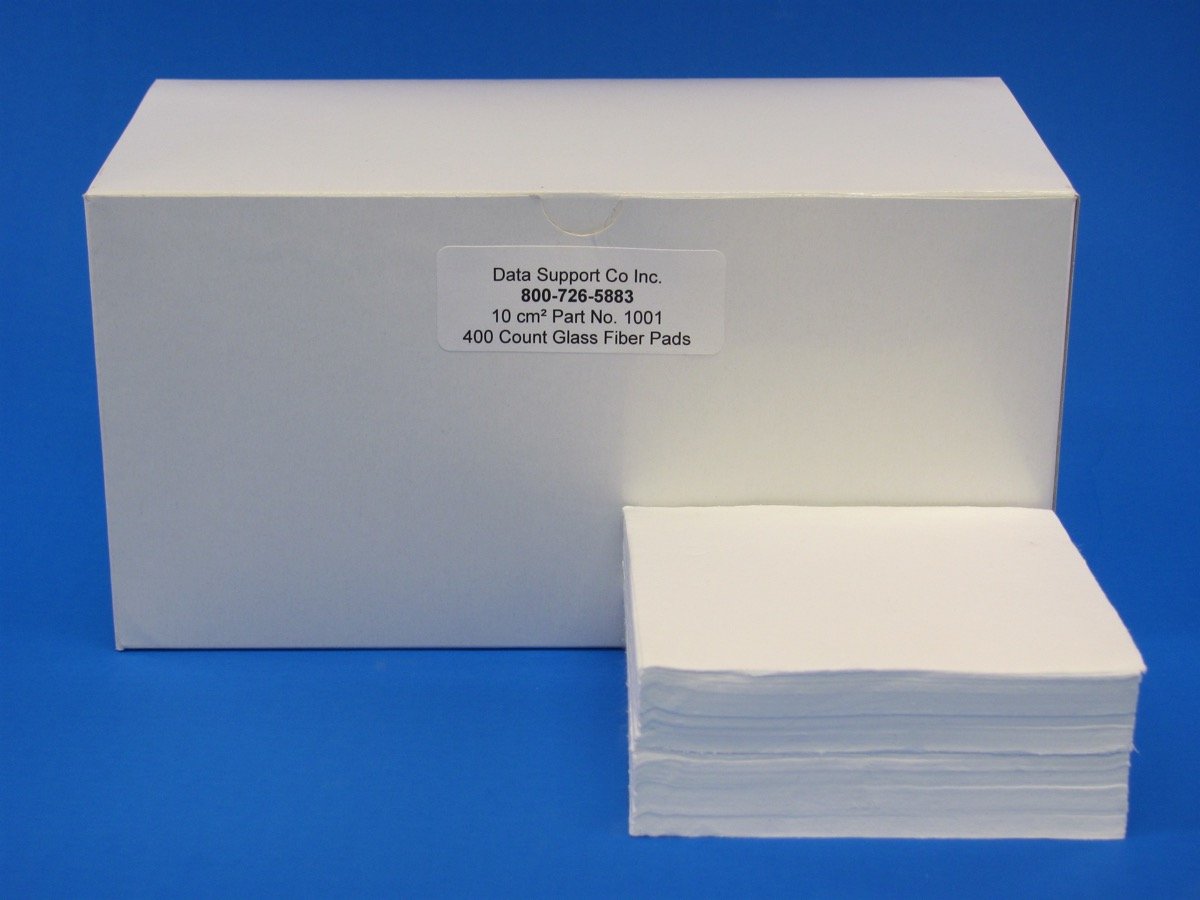Moisture Analyzers are specialized devices designed to measure and analyze moisture content in various samples. These devices offer an efficient alternative to traditional oven testing methods, utilizing halogen bulbs and other innovative techniques to effectively heat and dry samples.
Moisture analysis in the chemical industry is crucial for determining water content in materials to maintain product quality and process efficiency. Moisture analyzers measure moisture levels, with regular calibration and cleaning ensuring accurate readings to prevent downtime and optimize operations.
If you're curious about the inner workings of a moisture analyzer and its significance in moisture testing, you've come to the right place. Join us as we provide answers to these inquiries and more in this comprehensive guide on moisture analyzers.
Digital moisture analyzers and microwave-based moisture meters, are essential for determining material moisture. Brands like Mettler Toledo offer moisture analyzers that utilize infrared radiation, making infrared moisture analyzers critical in precise moisture measurement
Discover our comprehensive line of moisture analyzers and devices designed for precise moisture testing in industrial and scientific settings. Our offerings include portable analyzers for hay and resin, and innovative tools utilizing linearly polarized light and packet sniffers. The accuracy of moisture meters, the operation of moisture test machines, and tips on cleaning moisture analyzers.
Material moisture analyzers is crucial for assessing material quality and ensuring precise determination of moisture content, using specialized meters that can occasionally be inaccurate. Regular cleaning and adherence to specific test procedures are essential for maintaining the accuracy and functionality of moisture analyzers and balances.
Accurately measure moisture content with our advanced moisture analyzers, including IR moisture analyzers and humidity analyzers. Ideal for precise calibration and testing, our equipment offers reliable moisture content methods and relative humidity measurements.
I. What is a Moisture Analyzer?
A. Definition and Purpose: A moisture analyzer is a laboratory instrument designed to measure the moisture content in various substances. It utilizes advanced technology to accurately determine the amount of water or moisture present in a sample. This information is crucial for quality control, research and development, and ensuring product integrity in numerous industries. Moisture meters and precision instruments provide reliable measurements, crucial for maintaining quality in various sectors
Moisture Analyzers are installed and qualified to ensure accurate humidity measurements, operating on the principle of detecting water vapor changes. These devices, including H2O and humidity analyzers, are crucial in settings from natural gas processing to control systems that require continuous and fast response measurements for optimal operation.
B. Importance of Accurate Moisture Analyzers: Accurate moisture analysis is vital for industries such as food processing, pharmaceuticals, cosmetics, chemicals, agriculture, and more. It helps manufacturers comply with regulations, maintain product consistency, optimize production processes, and avoid potential issues such as spoilage, degradation, or inefficient formulation. By precisely measuring moisture content, companies can enhance product quality and extend shelf life. A moisture determination balance accurately measures moisture content in samples, crucial for lab analyses. Understanding moisture and its effects, like how leaves absorb moisture and warmer air pulls more moisture, is essential in various scientific fields.
II. How Does a Moisture Analyzer Work?
A. Basic Principles of Operation: Moisture analyzers typically employ the principle of thermogravimetric analysis (TGA). The instrument heats the sample while monitoring its weight loss, which is directly proportional to the moisture content. This weight loss is measured continuously until the sample reaches a stable, moisture-free state, providing accurate and reliable results.
B. Key Components and Sensors: Moisture analyzers consist of a heating unit, a precision weighing balance, a temperature control system, and a moisture sensor. The moisture sensor can be based on various technologies, such as capacitance, halogen, or infrared, depending on the specific instrument. These components work together to ensure precise measurements and consistent performance.
C. Data Acquisition and Analysis: Moisture analyzers are equipped with software interfaces that allow users to set parameters, monitor the drying process in real-time, and collect data. The acquired data can be further analyzed and stored for documentation or quality control purposes, enabling users to track moisture trends, identify outliers, and make data-driven decisions.
III. What is a Moisture Analyzer Used For?
A. Industries and Fields that Utilize Moisture Analyzers: Moisture analyzers find applications in a wide range of industries, including food and beverages, pharmaceuticals, cosmetics, chemicals, plastics, agriculture, environmental testing, and more. These industries rely on accurate moisture analysis for product development, quality control, research, and regulatory compliance.
B. Common Applications: Moisture analyzers are used to determine the moisture content in various samples such as raw materials, finished products, powders, liquids, solids, and pastes. They are particularly valuable for moisture analysis in cheese, grains, cereals, seeds, pharmaceutical formulations, polymers, adhesives, and building materials. The data obtained from moisture analyzers enables manufacturers to optimize processes, ensure product stability, and meet customer expectations.
C. Benefits of Moisture Analysis in Quality Control: By incorporating moisture analysis into their quality control procedures, companies can identify variations in moisture content that may affect product quality, stability, and safety. Moisture analyzers help maintain consistent production standards, reduce waste, and prevent costly product recalls. They also enable companies to comply with regulatory requirements and industry standards.
IV. Moisture Analyzer Drying Modes and What They Do:
Moisture analyzers offer different drying modes to suit specific testing needs. These modes include Ramp-up, Single, and Step.
-
Ramp-up: The temperature gradually increases to a specific degree over a set time, ensuring controlled heating.
-
Single: The analyzer maintains a constant temperature throughout the test, regardless of duration, eliminating temperature adjustments.
-
Step: The sample is heated at different temperatures for specified time intervals, allowing customizable temperature profiles.
These modes provide flexibility for accurate and efficient moisture analysis, catering to diverse sample characteristics and testing objectives.
V. How Accurate is a Moisture Analyzer?
Readability and repeatability are the main characteristics of accuracy for moisture balance/analyzer. Regular moisture balances range from 0.01 g to 0.001 g readability. There are also few moisture balances with 0.0001 g readability. For example, DSC 71P™ Low Moisture Analyzer (For Plastic Resins) and Sartorius Mark 3 HP Moisture Analyzer. Repeatability is also ranged and depends on a tested product, and type of moisture balance and goes up to 0.5 %.
A. Factors Affecting Accuracy:
Several factors can influence the accuracy of a moisture analyzer. These include the quality and calibration of the instrument, sample homogeneity, ambient conditions, and the operator's proficiency. It is important to consider these factors to achieve consistent and accurate moisture measurements.
B. Calibration and Maintenance for Accuracy:
Regular calibration is vital for maintaining accuracy in moisture analyzers. Calibration ensures that the instrument is aligned with reference standards and compensates for any deviations. Regular maintenance, including cleaning, verification of weighing accuracy, and inspection of heating elements, also contributes to sustained accuracy.
C. Ensuring Reliable and Precise Results:
To ensure reliable and precise results, it is crucial to follow proper sample preparation techniques, use appropriate sample sizes, and conduct multiple measurements for statistical significance. Additionally, operators should be adequately trained to handle the instrument correctly, interpret results accurately, and understand the limitations of the moisture analyzer.
VI. How a Benchtop Moisture Balance Works?
A benchtop moisture meter operates by utilizing a drying process to extract and measure moisture content. It combines a precise balance with a heater, and the procedure typically involves four simple steps:
-
Inputting Drying Parameters: The operator enters specific drying parameters, including the drying temperature, heating profile (i.e., how the heat is applied), and shut-off criteria. These details are typically entered using a keypad or control interface.
-
Placing the Sample: The sample to be analyzed is carefully positioned on a weighing pan located within the drying chamber of the moisture analyzer. Most of the time you also will need to use glass fiber pads and aluminum dishes. Please check this video to learn how.
-
Initiating the Analysis: Once the drying chamber is closed, the moisture analysis process commences. The instrument follows the programmed parameters to initiate the drying procedure.
-
Calculating Moisture Content: Throughout the drying process, the instrument continuously measures the weight of the sample. After the drying is complete, it compares the initial weight of the sample to the weight achieved after drying. The instrument then calculates the moisture content based on the loss of weight, presenting it as a percentage.
Typically, benchtop moisture analyzers employ halogen quartz glass as a heat source for drying. These heaters ensure consistent and uniform drying of the sample once the operator sets the desired temperatures. The temperature is generally maintained within 1°C of the selected setting.
VII. Why Should I Use a Moisture Analyzer Instead of Oven Drying?
A. Time Efficiency and Productivity: Moisture analyzers offer significantly faster analysis times compared to traditional oven drying methods. They provide rapid results, allowing for quicker decision-making, improved productivity, and reduced waiting times in quality control processes.
B. Improved Accuracy and Precision: Moisture analyzers utilize advanced technology and precise sensors to deliver highly accurate and repeatable results. They eliminate human errors associated with manual sample handling and temperature control, providing more reliable data.
C. Cost-Effectiveness and Return on Investment: While moisture analyzers may require an initial investment, they offer long-term cost savings. By reducing sample preparation time, optimizing production processes, and minimizing rework or product rejection, they contribute to overall cost-effectiveness and a positive return on investment.
D. Elimination of Human Error and Sample Contamination: Moisture analyzers automate the drying process, eliminating human errors that can occur during manual oven drying. Additionally, they often provide a closed system that prevents sample contamination, ensuring the integrity of the analysis.
E. Compliance with Industry Standards and Regulations: Moisture analyzers are designed to meet industry standards and regulatory requirements. They provide accurate and traceable moisture measurements, enabling companies to comply with quality standards, regulations, and certifications.
VIII. What are the calibration check ranges for this moisture meter?
Calibration Check Ranges for This Moisture Meter
When using this moisture meter, you'll want to ensure that the calibration is spot-on for accurate readings. The calibration check spans a specific range to guarantee precision. Here's the breakdown:
Calibration Check Range: Between 17.3% and 19.3%.
Ensuring that your device operates within this range is crucial for reliability and consistency in your moisture readings.
Conclusion:
Moisture Analyzers have become indispensable tools for various industries, offering accurate, efficient, and reliable moisture analysis. With their advanced technology, drying modes, and data analysis capabilities, they outperform traditional oven drying methods in terms of speed, accuracy, cost-effectiveness, and compliance. By embracing moisture analyzers, professionals can enhance their processes, improve product quality, and stay at the forefront of their respective industries.




